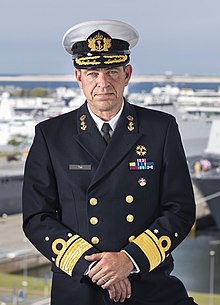
The Netherlands Armed Forces are the military services of the Kingdom of the Netherlands. The core of the armed forces consists of the four service branches: the Royal Netherlands Navy, the Royal Netherlands Army, the Royal Netherlands Air Force and the Royal Netherlands Marechaussee. The service branches are supplemented by various joint support organisations. In addition, local conscript forces exist on the Dutch Caribbean islands of Aruba (AruMil) and Curaçao (CurMil). These operate under the auspices of the Royal Netherlands Navy and the Netherlands Marine Corps. The armed forces are organisationally part of the Ministry of Defence.

The Belgian Defense Forces is the national military of Belgium. The King of the Belgians is the commander-in-chief of the Armed Forces. The Belgian Armed Forces was established after Belgium became independent in October 1830. Since then, the Belgian armed forces have fought in World War I, World War II, the Cold War, Kosovo, Rwanda, Somalia and Afghanistan. The Armed Forces comprise five branches: the Land Component, the Air Component, the Marine Component, the Cyber Component and the Medical Component.

The Royal Netherlands Navy is the naval force of the Kingdom of the Netherlands.

The United States Fleet Forces Command (USFF) is a service component command of the United States Navy that provides naval forces to a wide variety of U.S. forces. The naval resources may be allocated to Combatant Commanders such as United States Northern Command (USNORTHCOM) under the authority of the Secretary of Defense. Originally formed as United States Atlantic Fleet (USLANTFLT) in 1906, it has been an integral part of the defense of the United States of America since the early 20th century. In 2002, the Fleet comprised over 118,000 Navy and Marine Corps personnel serving on 186 ships and in 1,300 aircraft, with an area of responsibility ranging over most of the Atlantic Ocean from the North Pole to the South Pole, the Caribbean Sea, Gulf of Mexico, and the waters of the Pacific Ocean along the coasts of Central and South America.

The Netherlands Marine Corps is the elite naval infantry corps of the Royal Netherlands Navy. The marines trace their origins back to the establishment of the Regiment de Marine on 10 December 1665, by the then grand pensionary of the Dutch Republic, Johan de Witt and famous Admiral Michiel de Ruyter.
In military aviation, a wing is a unit of command. In most military aviation services, a wing is a relatively large formation of planes. In Commonwealth countries a wing usually comprises three squadrons, with several wings forming a group. Each squadron will contain around 20 planes.

Denjaka is a counter-terrorism special operations force of the Indonesian Navy. It is a combined detachment formed from selected personnel of the Navy's frogmen unit (KOPASKA) and the Marine Corps' Amphibious Reconnaissance Battalion (Taifib).

The Marine Corps of the Republic of Indonesia , previously known as the Commando Corps of the Indonesian Navy, is an integral part of the Indonesian Navy and is sized at the military corps level unit as the naval infantry and main amphibious warfare force of Indonesia. The Marine Corps is commanded by a two-star Marine Major General.
The structure of the United States Navy consists of four main bodies: the Office of the Secretary of the Navy, the Office of the Chief of Naval Operations, the operating forces, and the Shore Establishment.

Major General Garry Stuart Robison, is a retired Royal Marines officer who served as Commandant-General Royal Marines and Commander United Kingdom Amphibious Forces from 2006 to 2009.

Johannes Theodorus Furstner was a Dutch naval officer and politician. Reaching the rank of lieutenant admiral, he served as Minister of the Navy during World War II in the Second Gerbrandy cabinet.

Navy Command is the current headquarters body of the Royal Navy, and as of 2012 its major organisational grouping. It is a hybrid, neither a command, nor simply an installation. Royal Navy official writings describe Navy Command Headquarters both as a physical site, on Whale Island, Hampshire, a collective formed of the most senior RN officers, and as a budgetary grouping.

The Commander of the Royal Netherlands Navy (CZsk) is the highest-ranking officer of the Royal Netherlands Navy. The CZsk reports directly to the Chief of the Netherlands Defence Staff.

Vice admiral Matthieu Borsboom is a retired Royal Netherlands Navy officer who is a former Commander of the Royal Netherlands Navy and Admiral Benelux, and has served with the International Security Assistance Force in Afghanistan.

The Fleet Commander is a senior Royal Navy post, responsible for the operation, resourcing and training of the ships, submarines and aircraft, and personnel, of the Naval Service. The Vice-Admiral incumbent is required to provide ships, submarines and aircraft ready for operations, and is based at Navy Command Headquarters.
EGUERMIN is the Belgian-Netherlands Naval Mine Warfare school. This academic establishment provides training and education to Belgian and Netherlands Navy crewmembers in charge of minehunting, as well as to Naval Mine Warfare officers from NATO and PfP countries.
BeNeSam is the name of the Belgian-Dutch naval cooperation.

Allied Command Channel (ACCHAN) was one of three major North Atlantic Treaty Organization (NATO) commands from 1952 to 1994. Commander-in-Chief Channel was a Major NATO Commander (MNC).
Wim Robberecht is a Belgian naval officer who holds the rank of divisional admiral and since 2016 has served as the commander of the Belgian Navy.

Michel Hofman serves as the Chief of Defence of the Belgian Armed Forces since 10 July 2020. Prior to his post, he served as the Vice Chief of Defence.















